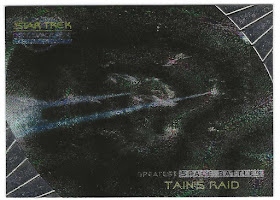Today is the last day of 2023 and I suppose it is time for reflection on the year and to make some promises to myself for 2024. Logically, there is nothing magical about January 1 with regards to self-assessment and new resolutions. But, I live a fairly busy life and having a lot of down time at the end of December does give the opportunity to look back...and then forward. I won't bother you with the personal, though it was generally a better year for me after two lousy years in '21 and '22. I will stick to the hobby stuff that you are here for:
Overall, 2023 was a good year hobby wise if a bit scattered. I managed to complete two sets during the year:
- 1955 - I started building this set in earnest in 2013, so this was 10 years in the making. As I reported earlier, the last card I needed was a common, Gale Wade. The second to last card was Jackie Robinson.
- 1969 - I wasn't planning to finish this set in 2023, but I discovered that my bank has rewards program for debit card use and I was able to convert over a years worth of points into a nice pre-paid VISA card. The last card was Al Downing.
- Fleer Autograph project - I started the year with 15 signed cards from 1960 and 62 from 1961. I will close out the year with 16 and 70.
- Started both 1966 and 1967 Topps baseball - I haven't mentioned it here, but I bought a large stack of 1966 and 1967 baseball commons in low to mid-grade for about $0.02 a card. I am planning on working on 1966, but after I sorted through the stack and separated out the cards in G condition or better, I found that I had about 20% of the 1966 set and 35% of 1967. know I said I would probably never build 1967 as the design doesn't interest me, but 35% is pretty far along. So, I may need to hold my nose and build the set. Hopefully, the high numbers are affordable in G to VG condition.
- Added a few cards to my Paul Blair and Johnny Antonelli collections. The only one I was actually excited about was a 1960 Topps Venezuelan card of Antonelli that I got dirt cheap.
- 1958 Baseball - with only 25 cards to go, I am going to prioritize getting this one done. Having started in 2012 when I bought the Mantle, 12 years is long enough.
- 1972-73 Basketball - I started this set in 2018 and have 33 cards to completion.
- 1973 Football - I started this set in January of 2020 and have 24 to go towards completion.
- 1974 Topps Baseball - Wait, what? I've said that I've completed the entire Topps run between 1968 and 1979, so what gives? What gives is that I need one card (599 - San Diego Small Print) to finish the master set. I rarely see that card for less than $30-$40, which seems excessive for what is essentially a common. But, I am close enough to completing the master set that I just need to hold my nose and get one.
- 2009 Tristar Obak - I started the three Obak sets in 2011. I finished 2010 and 2011 long ago and only need 7 short prints short of finishing 2009. They don't come available all that often and when they do, the prices are generally unreasonable. So, I probably should just be happy to make progress.










































